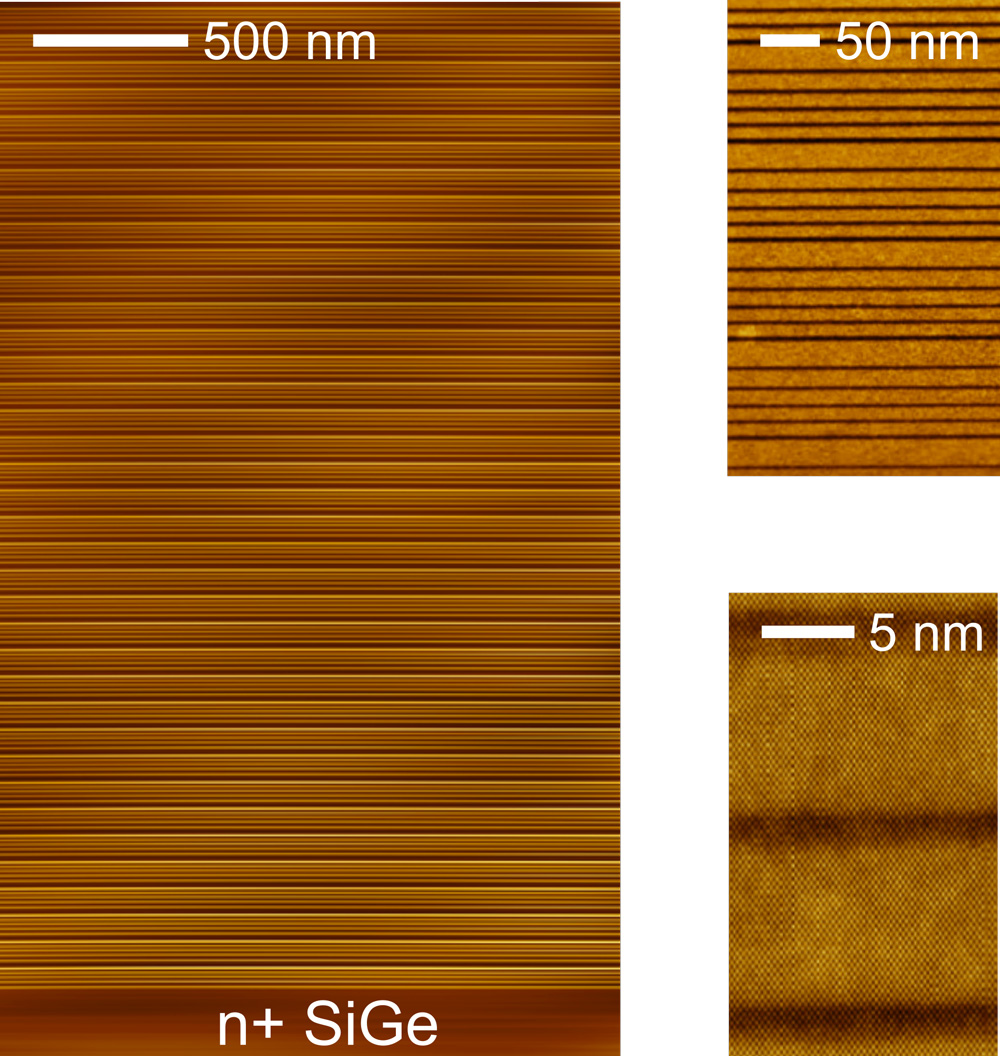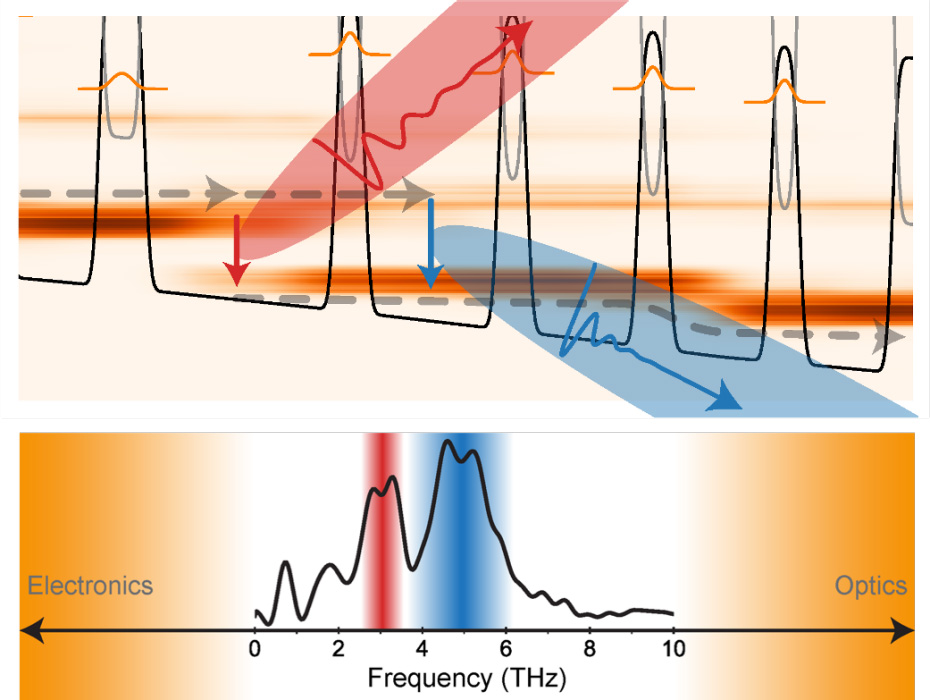News: Optoelectronics
9 March 2021
Electroluminescence from Ge/SiGe quantum cascade structures
An international team led by professors Giacomo Scalari and Jérôme Faist at the Institute for Quantum Electronics at Switzerland’s ETH Zürich has presented what is claimed to be an important step towards developing a laser on silicon.
They report electroluminescence from a structure based on silicon germanium (SiGe), which is compatible with standard fabrication processes used for silicon devices. Moreover, the emission they observed is in the terahertz frequency band, which sits between those of microwave electronics and infrared optics, and is currently of great interest with a view to a variety of applications (D Stark et al, ‘THz intersubband electroluminescence from n-type Ge/SiGe quantum cascade structures’, Appl. Phys. Lett. 118, 101101 (2021). DOI: 10.1063/5.0041327).
Light from silicon-based materials
Unlike in gallium arsenide (GaAs), where electrons can recombine with holes across the material’s direct energy bandgap and hence produce light, the indirect bandgap of silicon means that another path for electron and hole recombination is required to produce lasing in silicon. ETH Zürich doctoral researcher David Stark and his colleagues are working towards a silicon-based quantum cascade laser (QCL), which achieve light emission not by electron–hole recombination across the bandgap but by letting electrons tunnel through repeated stacks of precisely engineered semiconductor structures, during which process photons are emitted.
QCLs have been demonstrated in a number of materials — for the first time in 1994 by a team including Jérôme Faist (then working at Bell Laboratories in the USA) — but never in silicon-based materials, despite promising predictions. Turning these predictions into reality is the focus of an interdisciplinary project funded by the European Commission, bringing together a team of experts in growing semiconductor materials (at the Università Roma Tre), characterizing them (at the Leibniz-Institut für innovative Mikroelektronik in Frankfurt an der Oder) and fabricating them into devices (at the University of Glasgow). The ETH group of Scalari and Faist is responsible for performing the measurements on the devices, but also for the design of the laser, with numerical and theoretical support from partners in the company nextnano in Munich and at the Universities of Pisa and Rome.
From electroluminescence to lasing
With this bundled knowledge and expertise, the team designed and fabricated devices with a unit structure made of SiGe and pure germanium (Ge), less than 100nm in height, which repeats 51 times.

Graphic: Scanning transmission electron microscopy (STEM) images of one of the Ge/SiGe heterostructures at different magnifications. The SiGe layers appear darker. (Images: Università Roma Tre, De Seta Group)
From these heterostructures, fabricated with essentially atomic precision, Stark and co-workers detected electroluminescence, as predicted, with the spectral features of the emerging light agreeing well with calculations.
Further confidence that the devices work as intended came from a comparison with a GaAs-based structure that was fabricated with identical device geometry. Whereas the emission from the Ge/SiGe structure is still significantly lower than for its GaAs-based counterpart, these results clearly signal that the team is on the right track.

Graphic: As electrons tunnel through the Ge/SiGe heterostructure, they emit light, currently at two slightly different frequencies, due to suboptimal injection in the upper state of the radiative transition. (Image: ETH Zurich/David Stark)
The next step will be now to assemble similar Ge/SiGe structures according to a laser design that the team developed. The ultimate goal is to reach room-temperature operation of a silicon-based QCL.
Such an achievement would be significant in several respects, says ETH Zurich. Not only would it realize a laser on a silicon substrate, bringing a boost to silicon photonics, but also the emission of the structure created by Stark et al is in the terahertz region, for which compact light sources are currently widely missing. Silicon-based QCLs, with their potential versatility and reduced fabrication cost, could enable the large-scale use of terahertz radiation in existing and new fields of application, from medical imaging to wireless communication, it is reckoned.








